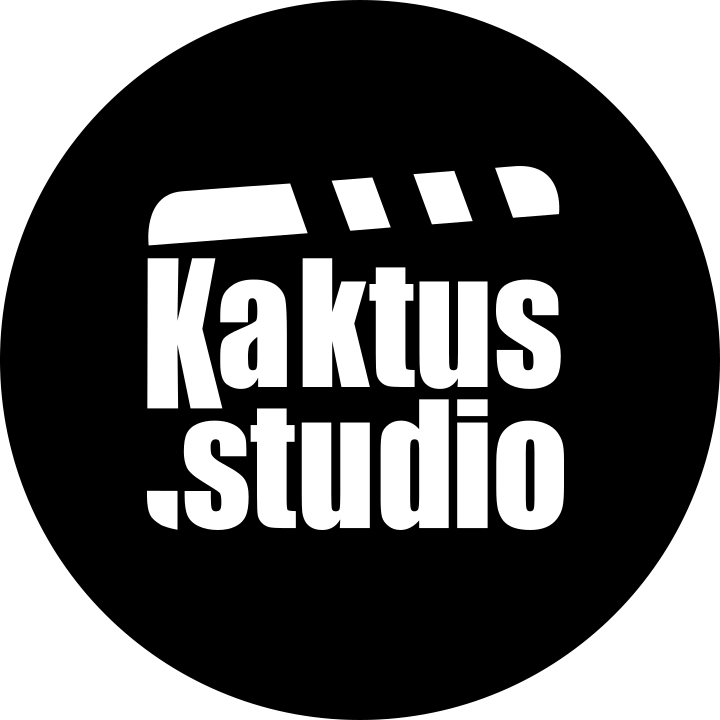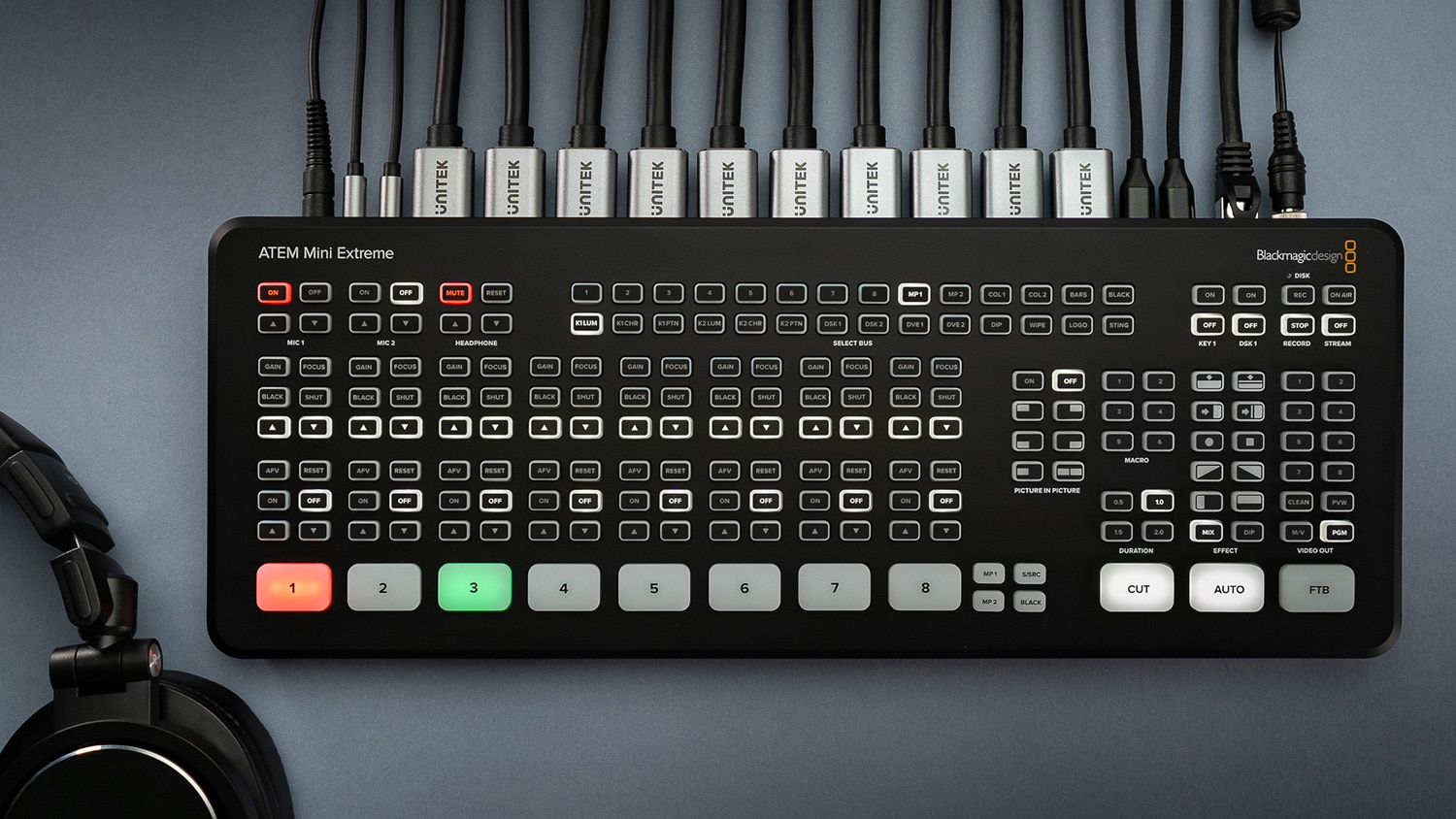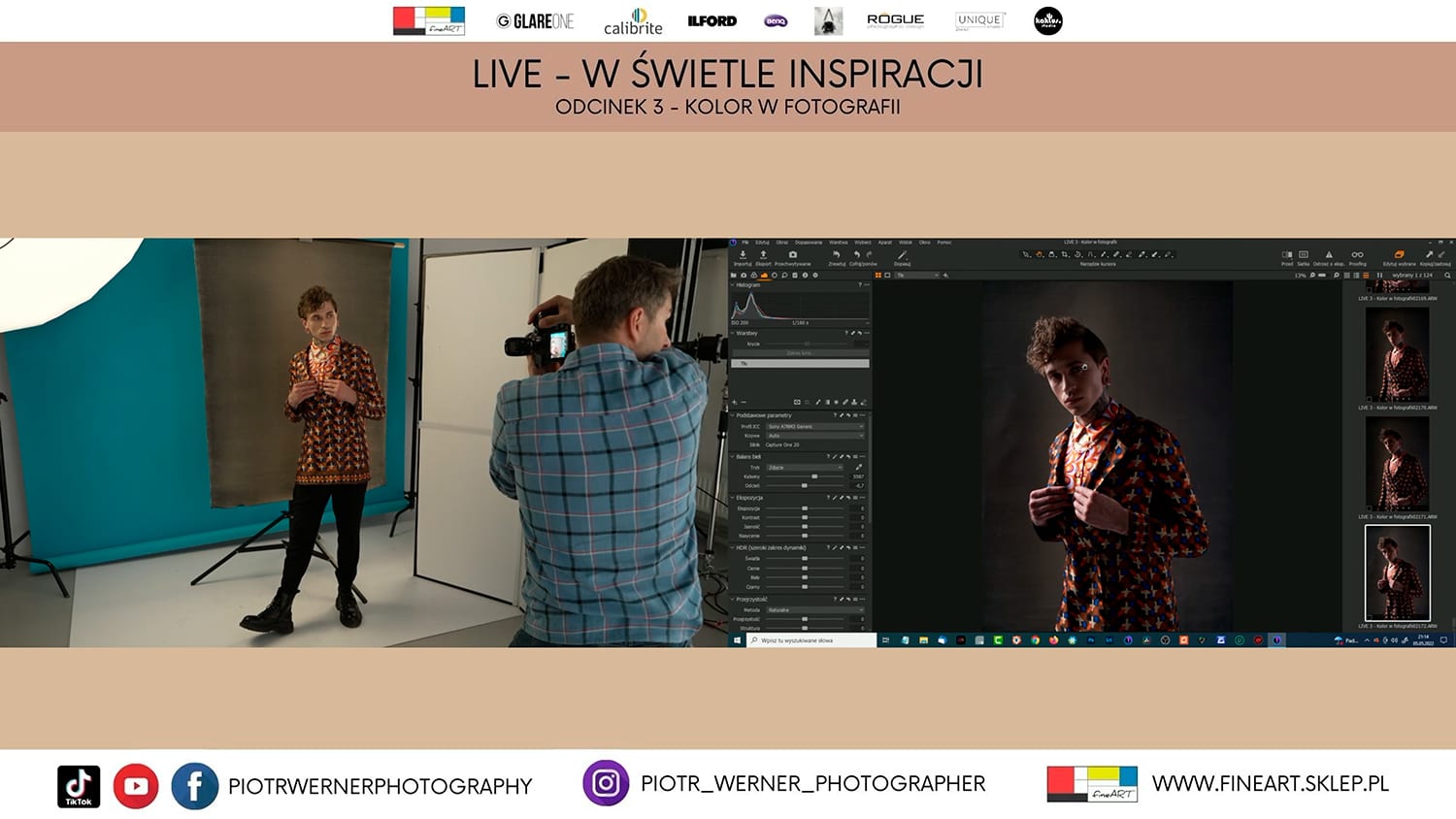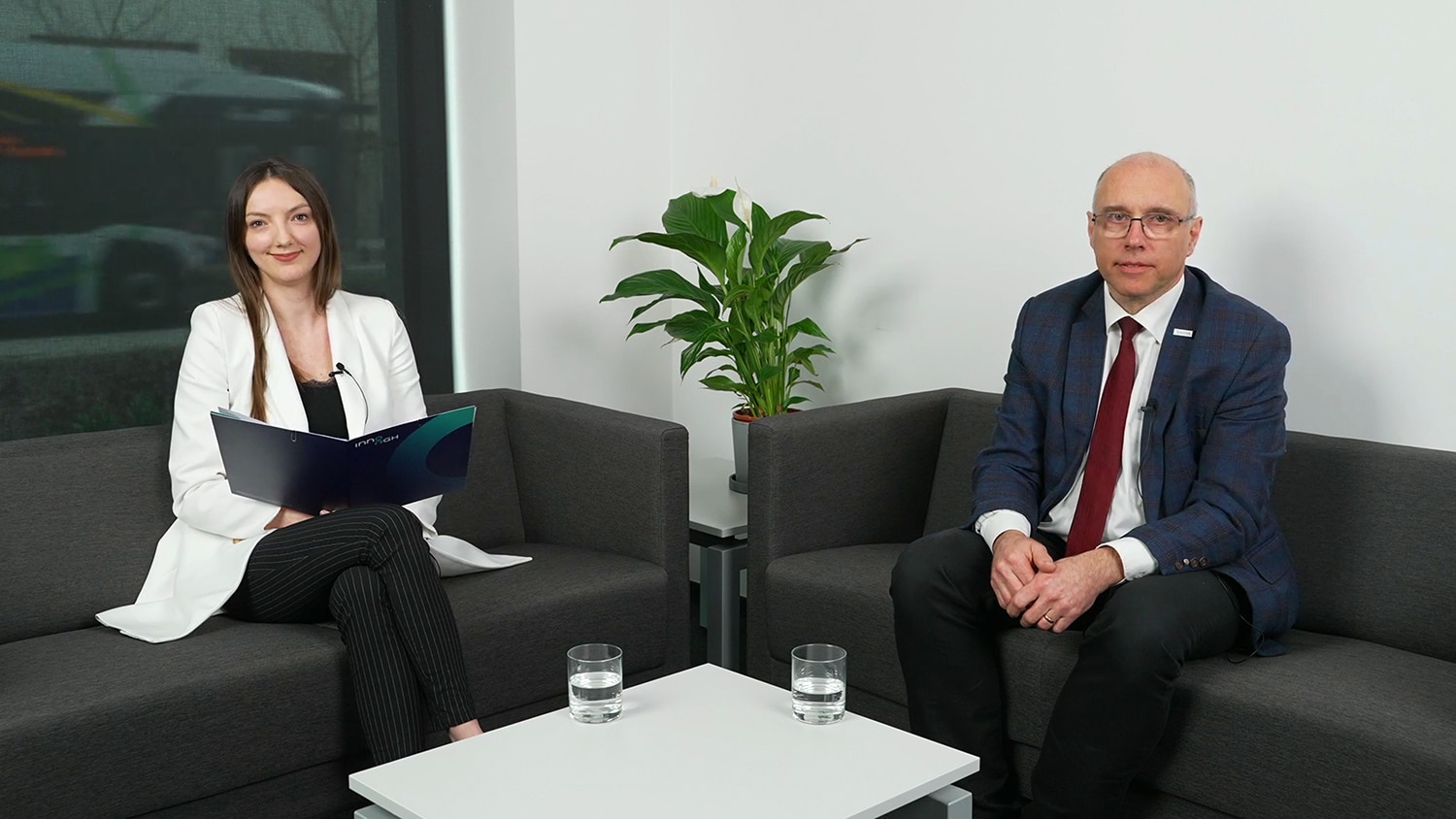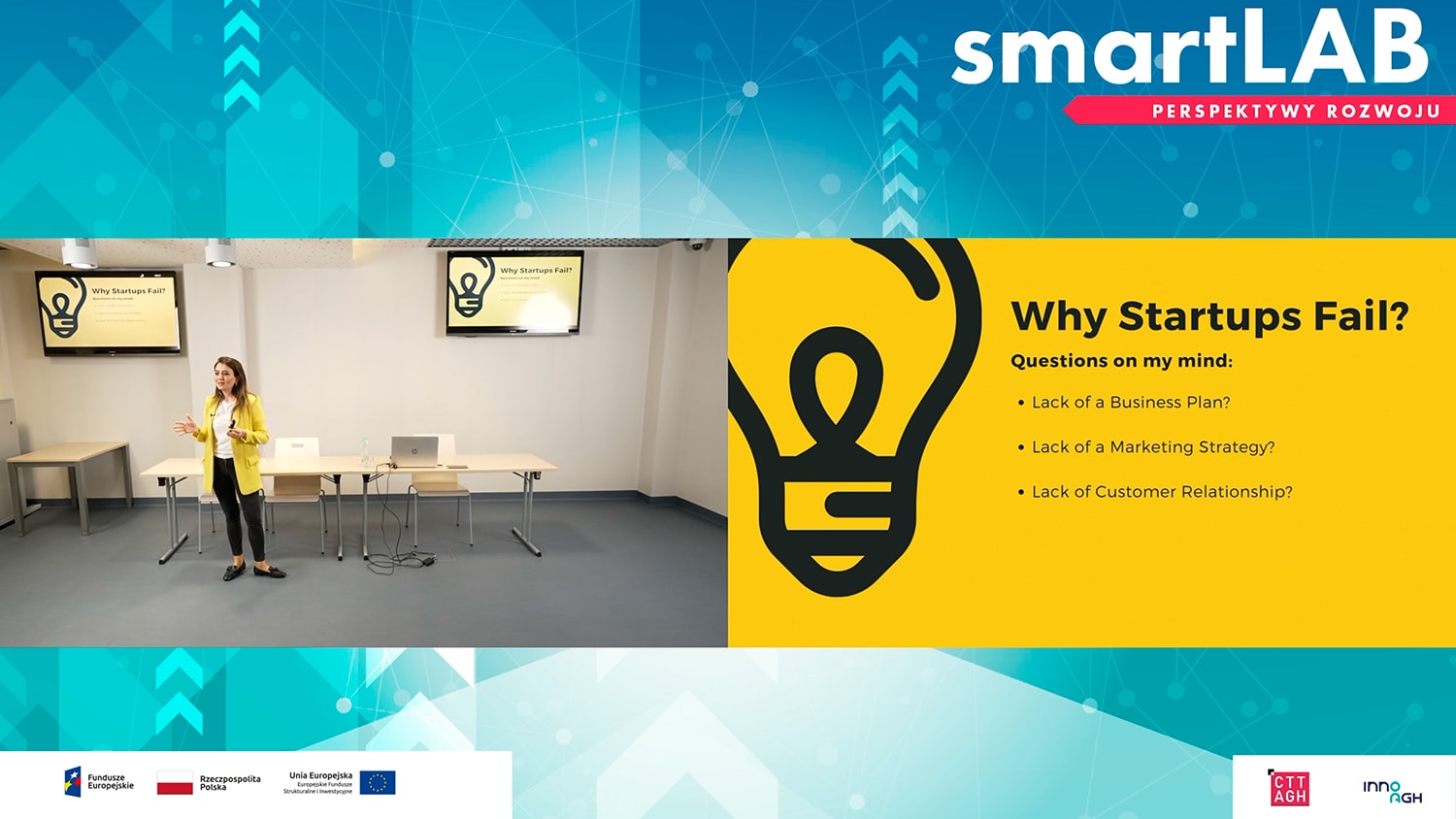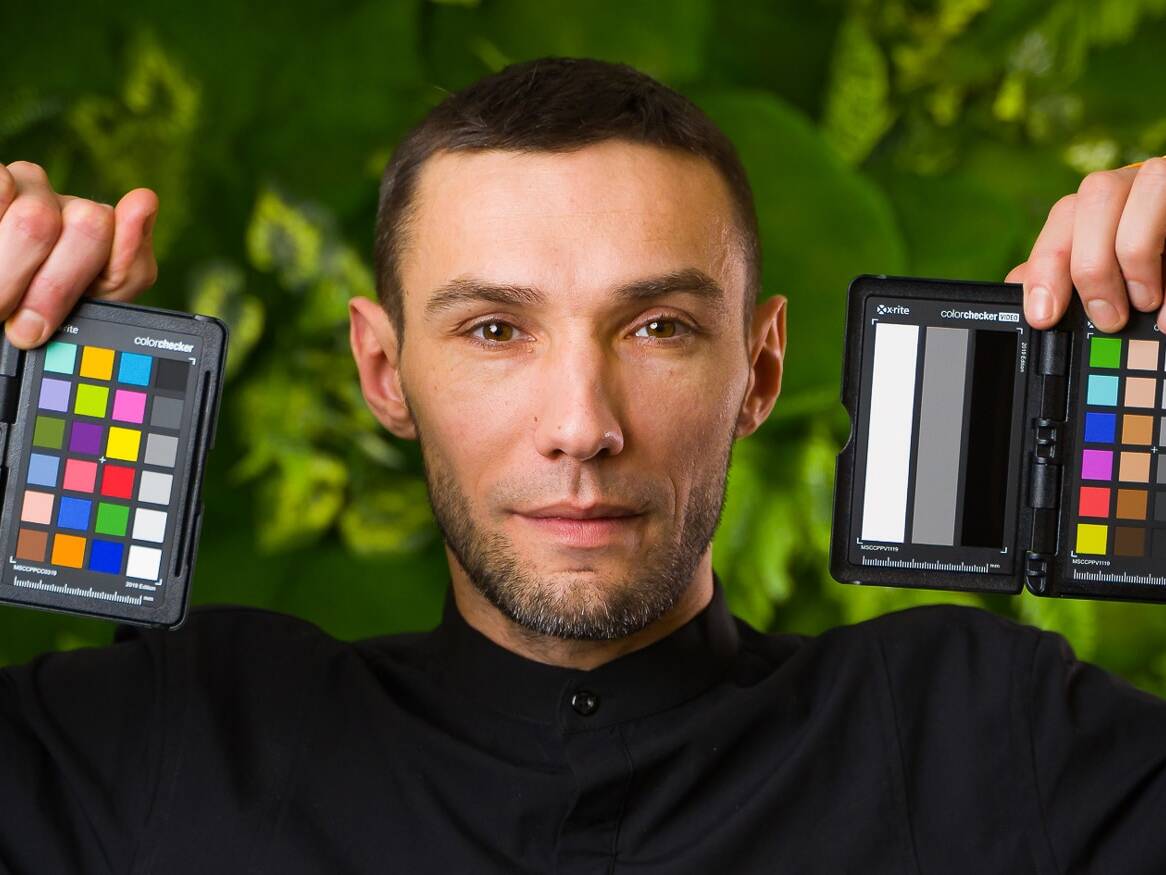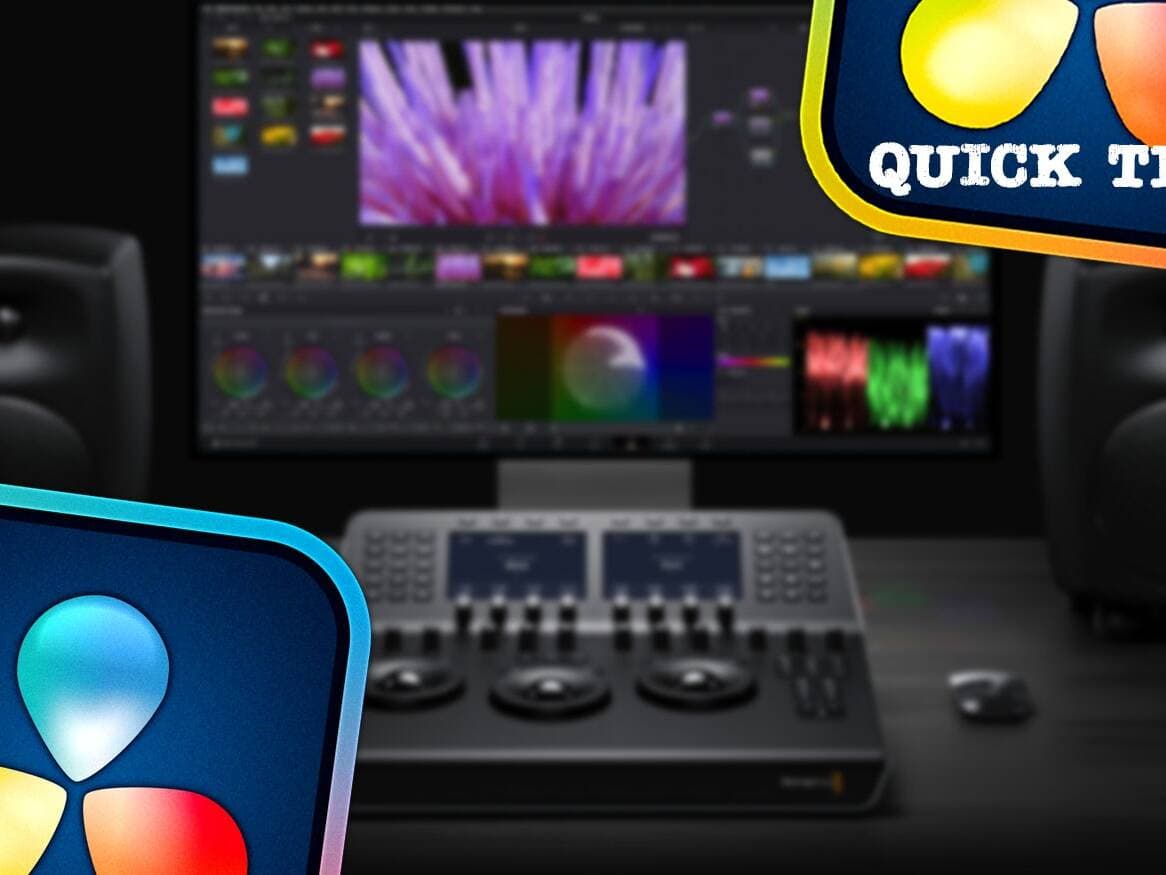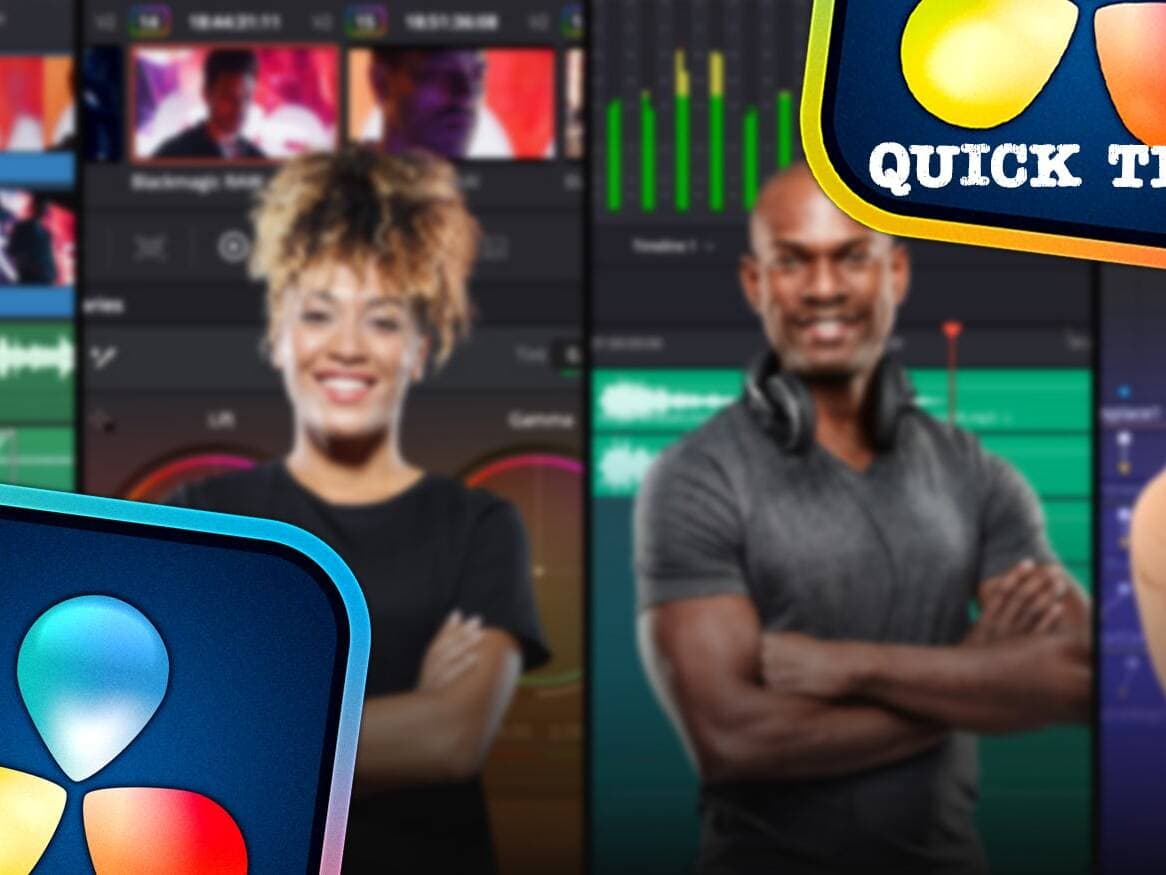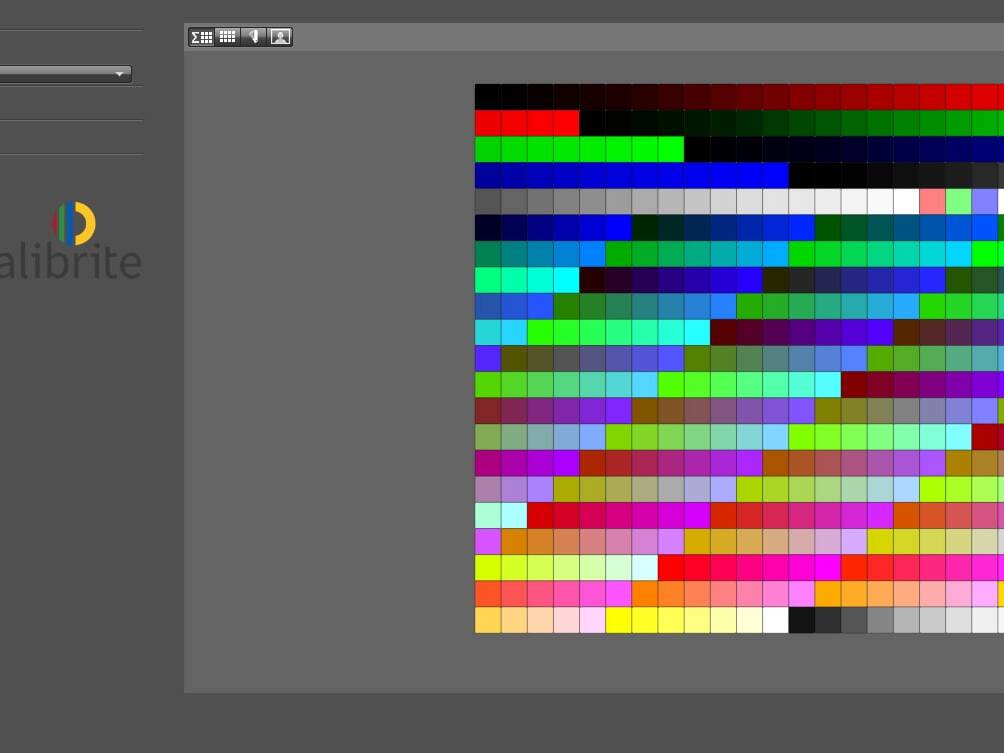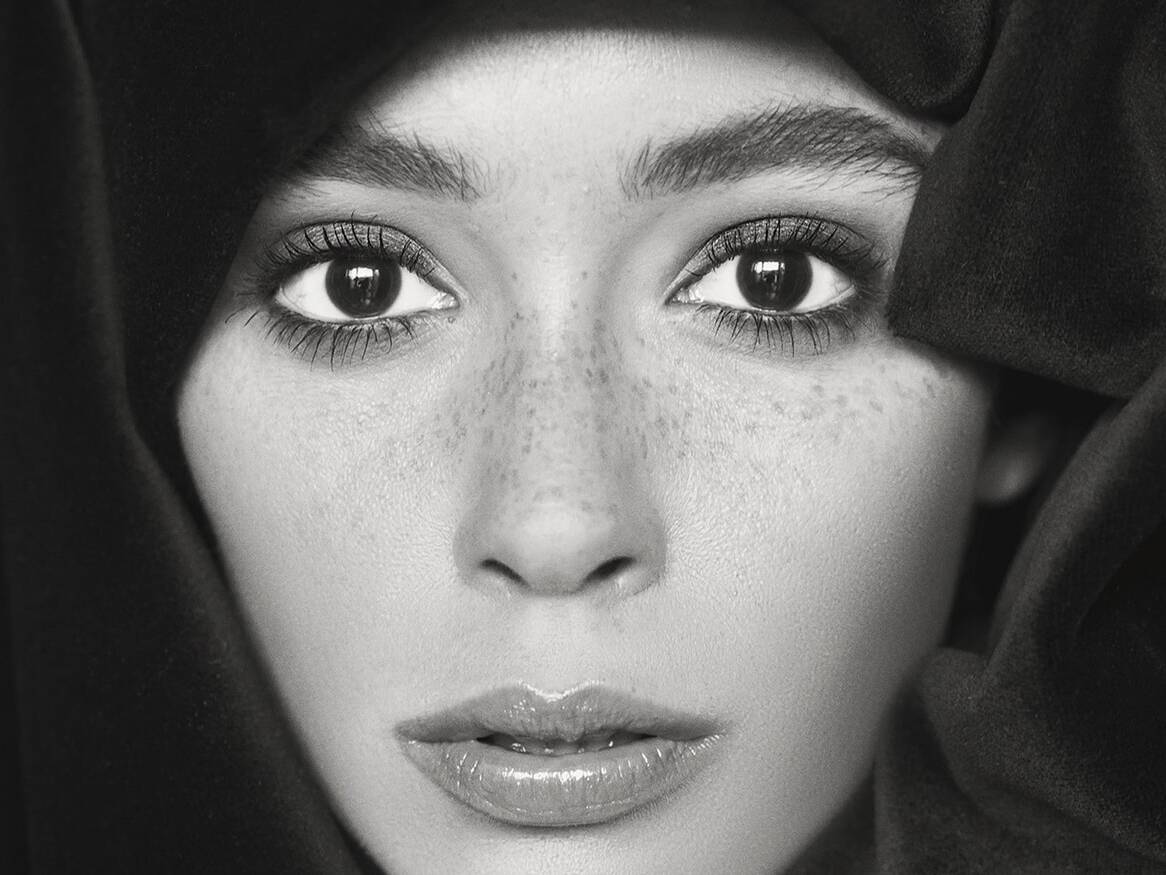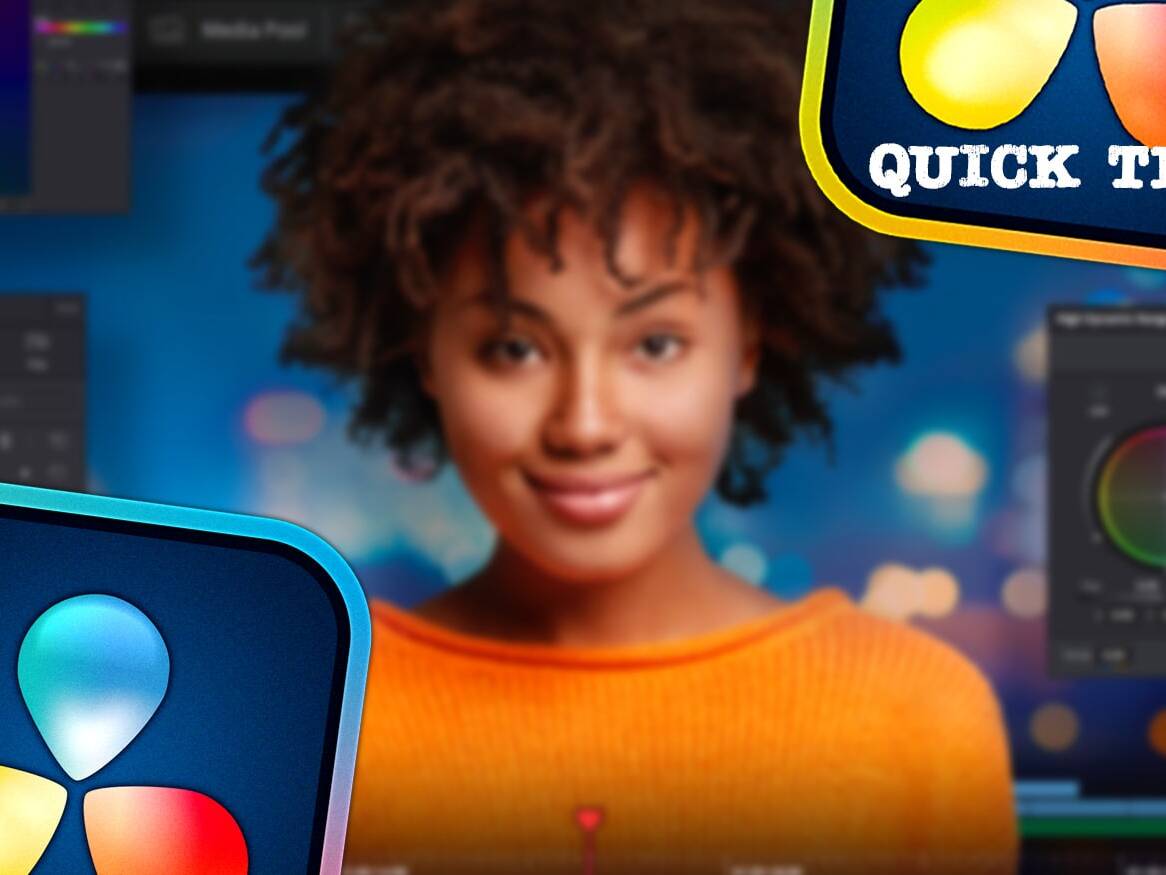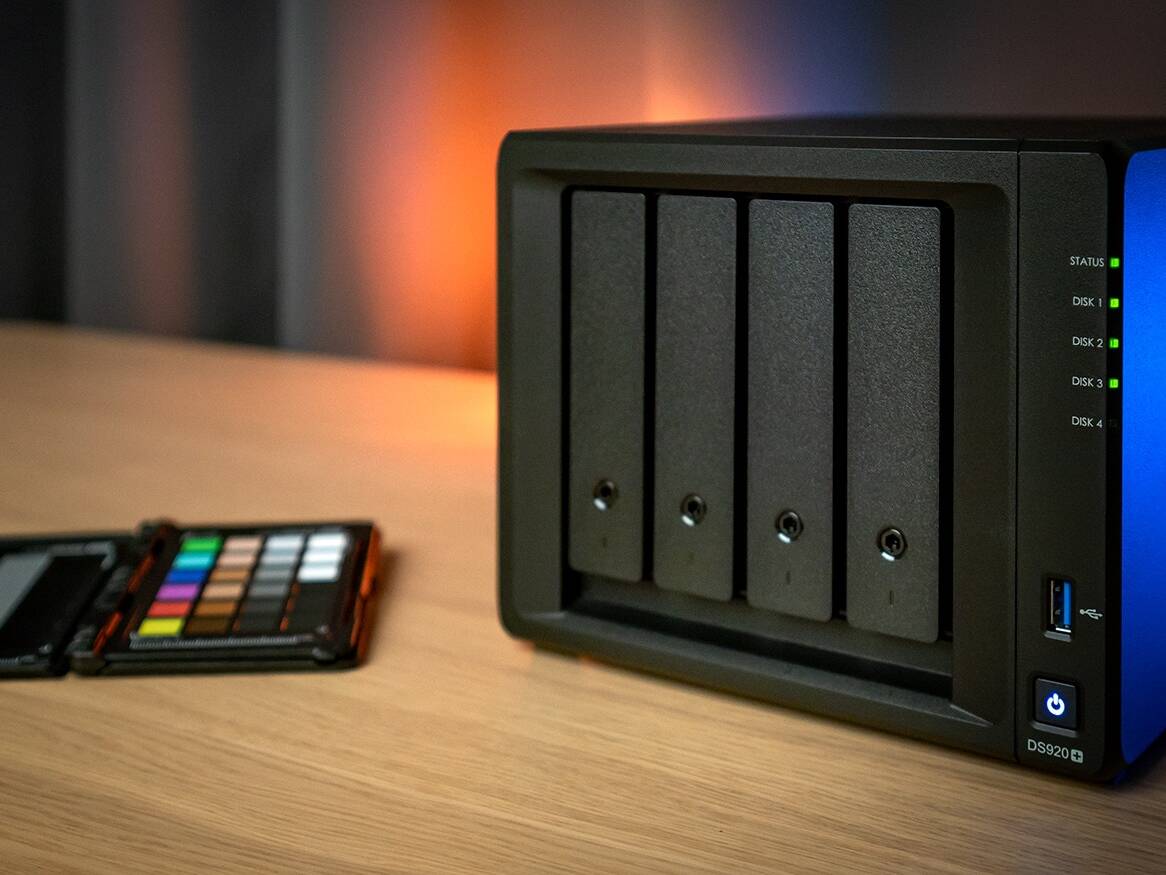Due to the amazing development of the technology in recent years today the slogan of online broadcasting can cover both a teenager with a smartphone in his hand, as well as a multi-person, experienced team using extremely expensive equipment, and the only thing they have in common is Internet access. The Kaktus.studio offer is much closer to the latter option. So how does the backstage of such productions look like?
ATEM MINI EXTREME STREAM MANAGEMENT
The real heart of the entire system is the image and sound mixer. Since Blackmagic Design launched new products from the Atem Mini series in 2019, the market has gained a completely new segment, previously reserved exclusively for high-budget productions. Whereas, when in 2021 the world saw the Atem Mini Extreme models, including Supersource functions and two USB and HDMI outputs, the possibilities have become so great, that with the appropriate quality of other equipment, experience of the crew and proper preparation for the transmission, their quality can be comparable to TV!
At Kaktus.studio we are using the Atem Mini Extreme mixer. This is a device that can input up to eight video (and audio) signals plus two separate audio signals. We can therefore use, for example, five cameras and three other devices, such as a laptop or tablet, sending presentations, films or graphics, and two separate microphones. The mentioned Supersource function allows for the simultaneous presentation of two or more sources on the screen using personalized graphics as backgrounds, and the whole can be dynamically changed (animated), which gives a very professional and aesthetic look for the recipients.
In addition, the device allows you to connect two monitors, one of which is used for multi-screen preview for the broadcast provider, and the other is directed towards the presenters, so they can view the currently transmitted image, or e.g. questions from viewers during the Q&A session. Of course, the entire broadcast is recorded on an external drive in original HD resolution, so the material can then be post-produced or immediately shared on other platforms. And two more words about the platforms; streaming can be carried out directly from the device on YouTube, Facebook, Vimeo, or other media that provide the so-called streaming key, or via a USB connection to a computer, where the computer is the transmitting device and Atem acts as a webcam for it.
CAMERAS
I mentioned above, that the transmission can be carried out with the use of up to eight cameras, everything of course depends on the budget and real needs. At Kaktus.studio we work with two own Sony a7sIII and Sony A7IV cameras, which guarantee the same picture and allow to obtain beautiful and natural colors with the S-Cinetone profile. If more equipment is necessary, we use a rental company. In addition, we have Manfrotto video tripods, thanks to which the movement of the camera is smooth and pleasing to the eye.
SOUND
It is said that the viewer’s tolerance level is much higher with the image than with the sound, and therefore we try to care for it to the highest degree. So, we have at our disposal, first of all, Sennheiser wireless systems with lavalier microphones, which are standard on many TV and radio stations. The next ones are Sennheiser and Rode directional microphones, as well as a Zoom H6 sound recorder. In addition, which I did not mention, the Atem Mini Extreme itself allows you to use functions such as the Equalizer with low and high pass filter, Expander or Limiter. All this means that the sound accompanying the image will be clear and pleasant to the ear, whereas the program hosts unrestricted by the space when moving around on the set.
LIGHTING ON SET
Another important element is the lighting on the set. We have at our disposal two Fomei lamps with a power of 210W each, together with softboxes with a diameter of 120 cm, and a smaller Aputure Amaran lamp with a power of 60W, also with a softbox. These lamps provide very uniform lighting in terms of color reproduction and have a variable color temperature, which allows them to adapt to the existing conditions on the set. In addition, if necessary, we use the lamps of a friendly manufacturer – Glare One.
PREPRODUCTION
To ensure the event’s success later, together with the client, we prepare a detailed scenario of all the activities on the air. We also make an appointment in advance to check the possibilities of setting cameras and lighting the scene, or test the quality of the Internet connection.
The offer of Kaktus.studio also includes the possibility of ordering the appropriate graphic design, including video clips for the start and end of the broadcast, matching the colors and logotype used by the client.
LIVE STREAMS PRODUCTION
Depending on the type and size of the event, we check in on the spot either the day before or on the day of the broadcast, but at least a few hours earlier, to calmly prepare for the implementation. The process of disassembling equipment, cables, etc. (and especially later assembling) is by far our least favorite part of the whole process. Then we go on the air, and the experience and prepared action plan allow us to work without unpleasant surprises. And when the broadcast ends, the satisfied faces of the participants say one thing: we got it!
POSTPRODUCTION
Finally, after the end of the broadcast, clients often share the record on social media, which can be previously corrected in the studio, as well as possibly supplemented with additional elements, such as subtitles for the deaf viewers or translations.
ADDITIONAL OPTIONS
Each client, each event is practically a different configuration and different needs. It is therefore worth knowing that during the transmission you can also use additional possibilities, such as:
- inviting guests participating remotely (e.g. via Zoom applications),
- keying, so-called greenscreen,
- conducting parallel transmissions, e.g. in Polish and English (assuming a signal is received from the interpreter’s booth),
- and others determined individually.
If you are thinking of online broadcast of your event, please contact me for more information!
See also:
04/01/2024
DaVinci Resolve quick tips #4
It's time for another post with DaVinci Resolve tips, including how to easily remove unused clips from Media…
11/11/2023
Tilta Nucleus Nano II follow focus review
Is the new Tilta Nucleus Nano II follow focus set just a cosmetic change or a completely new quality?
23/06/2023
Calibrite ColorChecker Passport Video
Check out why the Calibrite ColorChecker (Passport) Video color guide is an indispensable tool on every film…
10/02/2023
DaVinci Resolve quick tips #3
Version 18.1 of DaVinci Resolve was released, version for iPad, so I envite you for the third portion of…
25/08/2022
DaVinci Resolve quick tips #2
As it's been some time since the first entry with DaVinci Resolve tips, it's high time to publish the second…
15/07/2022
Software calibration of any monitor
Almost any display or monitor can be calibrated (profiled), in addition having a calibrator combined with a…
25/04/2022
What do I owe to photography
In this blogpost I share my thoughts about what I owe to photography as a filmmaker, and why the role of…
28/12/2021
DaVinci Resolve quick tips #1
I started a series of so-called "quick tips" about DaVinci Resolve. Hope you find them interesting, I invite…
14/09/2021
BenQ SW271C monitor review
I use BenQ SW271 monitor on a daily basis, but now I had an opportunity to test its successor - SW271C. Are…
05/07/2021
Synology NAS in the service of videographer
Is it worth to invest into NAS file server? Learn my experience with DS920+ model after 3 months of usage!
